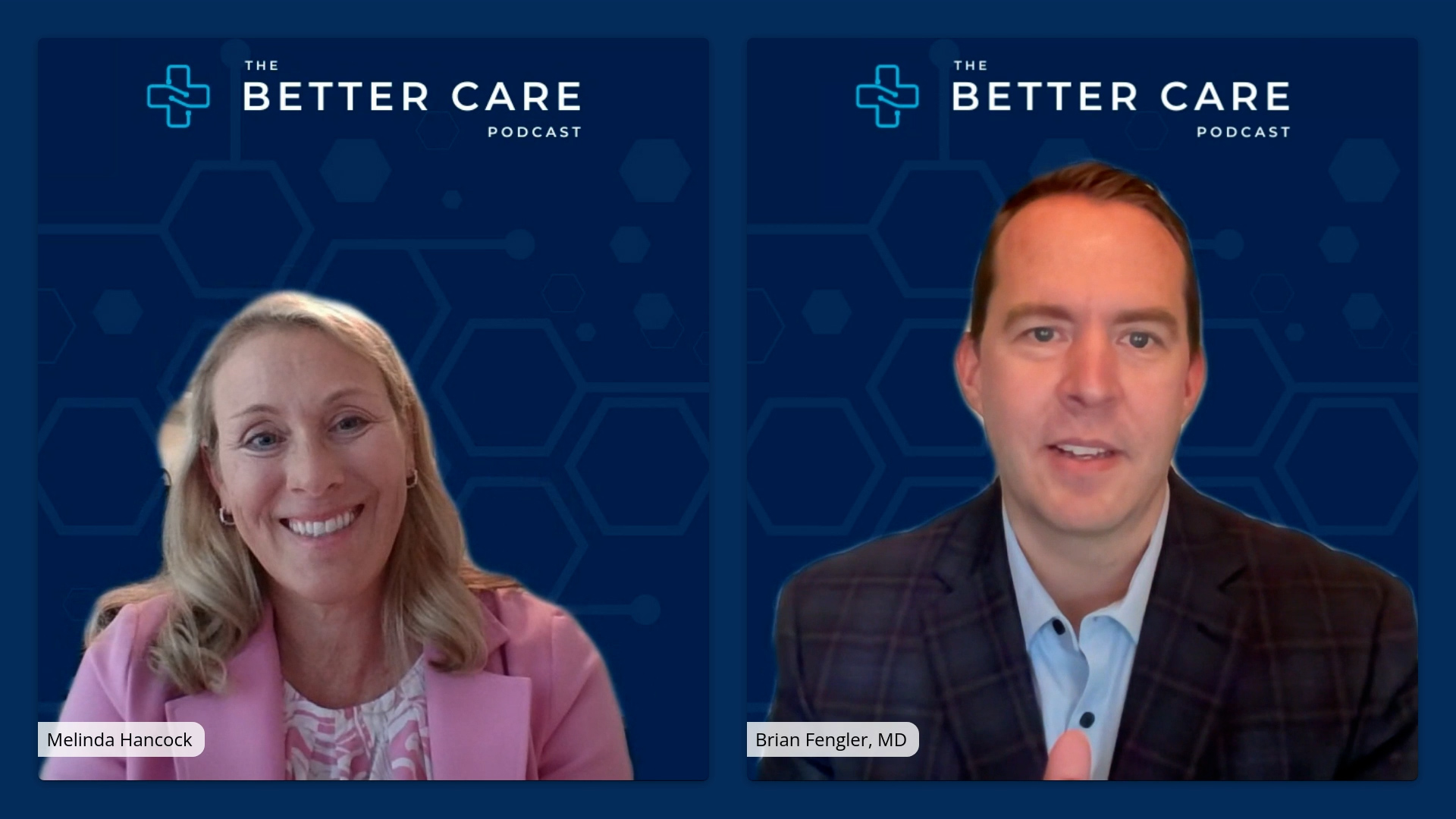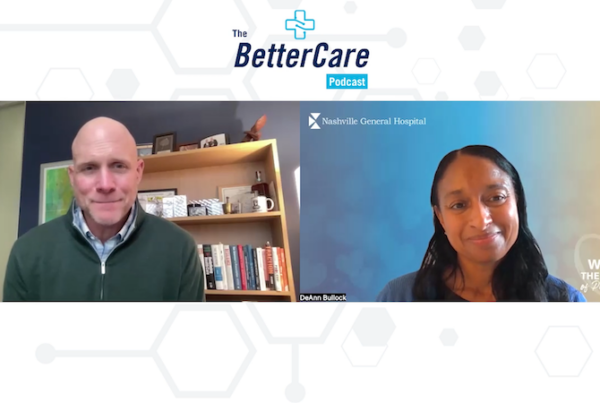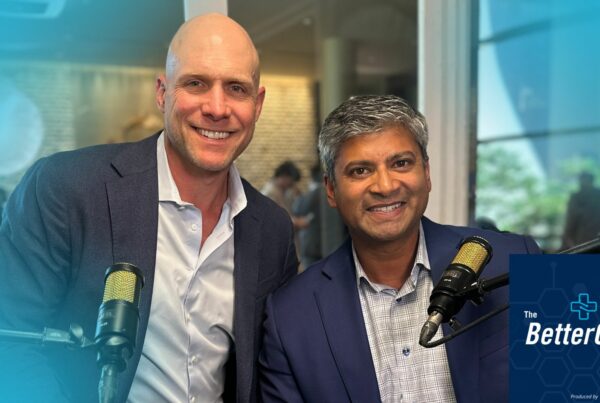In a recent episode of The Better Care Podcast, Melinda Hancock, Executive Vice President and Chief Transformation Officer at Sentara Health, shared insights on how Sentara is driving healthcare transformation.
Hancock explains Sentara’s forward-thinking model for innovation and cross-functional collaboration, offering actionable strategies that can help you improve innovation at your own facility. In this blog, we will be highlighting this model and what Sentara Health is doing to make it successful.
Some quotes have been slightly edited for brevity.
The Groundwork for Successful Transformation
Sentara Health is proactively preparing for the future of healthcare with a focus on new technologies. This progress is only possible with a strong infrastructure in place, which serves as the backbone of Sentara’s transformation efforts.
While it’s tempting to focus only on new technology and innovative initiatives, building a strong, reliable infrastructure is critical for:
-
- ensuring seamless integrations
- enabling smooth data flow
- supporting real-time analytics
- providing the operational framework necessary for efficient, scalable processes across the organization
Without a solid infrastructure in place, the promises of innovation and improved care cannot be met.
“I’ll be honest with you, a lot of what we’re doing is foundational building, especially in terms of IT infrastructure. Seamless integration doesn’t happen easily—it requires ensuring that all the information is properly connected and aligned.” – Melinda Hancock
These efforts ensure that Sentara’s transformation efforts are built on stable ground. This not only allows for the efficient operation of current systems but also equips the organization to scale innovations giving them the ability to better meet the needs of patients.
Building a Transformation Structure around Health System Goals
Successful long-term transformation requires healthcare systems to plan beyond immediate challenges and develop sustainable, future-ready solutions.
Sentara Health’s strategy focuses on designing processes that can support the evolving demands of the next five years and beyond.
A key element of this approach is building a robust structure that unites various departments, fostering collaboration across clinical and financial teams to achieve the shared goal of making healthcare simpler, seamless, personalized, and more affordable.
“Every single patient and member is in a different place in their healthcare journey. So how do we make sure that we are a trusted partner and meeting them where they are, not ‘build it and they will come’? By doing that, we have to partner with our clinical teams and our financial teams and a variety of different teams across the organization. We have set up a transformation structure that support that.” – Melinda Hancock
Central to this transformation structure is empowering teams to think creatively and work collaboratively, ensuring that innovation is embedded throughout the organization.
Turning Ideas into Action
Innovation is essential for healthcare organizations to remain competitive and meet the expectations of patients. However, fostering innovation in a large health system can be challenging. New ideas can easily get lost in the shuffle of day-to-day operations.
At Sentara, creating a culture that empowers employees to propose creative solutions is a priority, and the organization has built a structured system to ensure the best ideas are implemented efficiently.
“There’s a tremendous amount of opportunities to work across different departments and different business units. What I’ve been trying to do is create a good environment to foster ideas, innovation, and creativity to make sure that we are thinking not just where the puck’s going for a consumer but reimagining how we actually take better care of our consumers.” – Melinda Hancock
To encourage innovation, Sentara implemented an ideation tool that allows any of its 30,000 employees to submit ideas for improving care. This tool serves as the foundation for turning innovative ideas into actionable projects, and it empowers employees to play an active role in shaping the future of healthcare at Sentara Health.
“We’ve got thousands of people ideating and thinking through, ‘what’s next? How else can we think about this?’ We’ve got a lot of stuff piloting and going live, but we’ve also got this great pipeline of ideas coming through.
We ask employees, ‘Imagine a world five years from now where care is simple, seamless, personal, and more affordable, what would you do?’ And then how do we use the resources of the transformation to see if it’s feasible.” – Melinda Hancock
Prioritizing Initiatives
Having thousands of ideas won’t result in progress without prioritizing the right ones. Priorities should directly align with health system goals.
At Sentara Health, quality and safety are always the top priority, so ideas that improve patient outcomes, reduce risks, and optimize resource utilization are given the highest priority.
It’s important to set the expectation that not all ideas make it through to be executed—some are paused or merged with other initiatives to ensure that resources are allocated efficiently.
“Projects go through a variety of different filters of how they get prioritized. In some cases, when we’re doing that prioritization, we also discover things that can be stopped, paused, or even combined into other initiatives.” – Melinda Hancock
By building this framework around innovation and prioritizing efficiently, it ensures that only the most promising ideas move forward, and that those ideas are equipped with the necessary resources, expertise, and support to succeed.
Supporting Project Owners
For a prioritized idea to make it in the pipeline for execution, it must have a clear owner or “champion” who is responsible for leading the initiative. This champion is supported by a multidisciplinary team, which may include finance, clinical, legal, and IT experts, to ensure that the idea is fully vetted from all angles.
The initiative is also subject to rigorous financial and operational planning, including the development of a detailed business plan and key performance indicators (KPIs) to track its progress.
“We surround this person with all sorts of resources—change management, analytics, you name it—and we make sure that it’s fully vetted before it then goes live. That’s the great part about it. We don’t expect somebody to just take it and run. We surround it and we vet it.” – Melinda Hancock
By providing robust support, Sentara ensures that initiatives have the highest likelihood of success. This holistic approach not only mitigates risk but also facilitates faster implementation and scaling once the pilot proves effective.
Piloting Ideas and Scaling Success
Once an idea is vetted and approved, Sentara Health moves forward with piloting the initiative in a real-world setting. The pilot phase is critical for testing the feasibility and impact of the idea on a smaller scale before it is rolled out more broadly.
During this phase, clear KPIs and milestones are established to measure the effectiveness of the initiative. The business plan is carefully followed, and ongoing adjustments are made to ensure success.
“If it’s a pilot, we’re putting in the KPIs, we’re tuning in the milestones, and the owner has a business plan. That way, when a pilot works, imagine how quickly it can be replicated and spread across the system.” – Melinda Hancock
This disciplined process allows Sentara to assess the value of an idea and determine if it can be scaled system wide. Once a pilot proves successful, the organization can swiftly implement it across multiple hospitals, ensuring that the benefits are shared with more patients and healthcare providers. This approach enables Sentara to innovate efficiently and adapt to the rapidly changing healthcare environment while maintaining high standards of care.
Sentara Health’s approach to transformation is rooted in a strong infrastructure and a collaborative culture that empowers employees at all levels to drive innovation. The organization has established a comprehensive framework that turns ideas into actionable initiatives, prioritizes them based on health system goals, and supports them through rigorous evaluation and piloting.
Through this structured and forward-thinking approach, Sentara is positioning itself at the forefront of healthcare innovation—transforming care to be simpler, more seamless, and accessible for all patients.
For the full interview between Melinda Hancock and Dr. Brian Fengler, watch or listen to Episode 19 of The Better Care Podcast.









